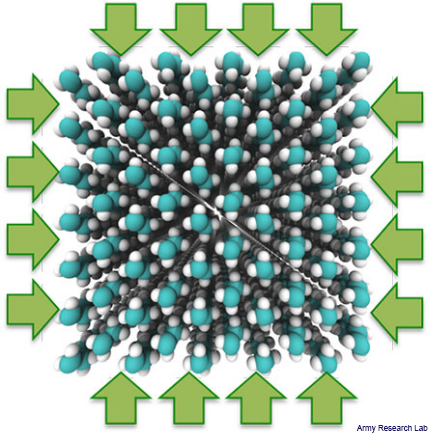ARL developing new polymers to strengthen future armor
The lab is taking new approaches to polymer-based defensive equipment that will better protect soldiers in decades to come.

The myriad threats facing the United States has prompted a number of safeguards put in place to protect the homeland. Billions of dollars are spent on defensive measures, from surveillance drones to advanced aircraft such as the F-35. But there is another line of defense—the protections given to personnel in harm’s way.
With indications that the current defensive equipment and armor might not be sustainably or sufficiently protective in the coming decades, the Army Research Lab is devoting research and development to strengthen the armor provided to soldiers. The lab is working on developing new polymers through various methods, such as chemistry, microstructure and energy absorption, which will all contribute ultimately to a stronger protectant.
Polymers are fibers that can be found in the natural world but can also be synthetically created, and are currently used in protective materials such as Kevlar. Through a complicated and long-term process, ARL will design new polymers with extreme ballistic environments in mind.
ARL is employing the help of its Enterprise for Multiscale Research of Materials, originally created for projects just like this in mind that require “validated models of these polymers at the molecular level and under high-rate loading conditions,” according to an ARL release. The Enterprise for Multiscale Research of Materials has already made strides at the molecular level in developing stronger polymers.
Patterns and methods developed by ARL researchers and graduate students have wide ranging uses for the Army. “[T]hese potentials are general enough to be applied to many materials and will help in the advancement of other materials too, such as graphene and other novel 2D polymers," said Dr. Jan Andzelm of ARL.
ARL is also making strides in computational models to synthesize systems for testing to ensure they will hold up in ballistic environments. “Once researchers truly understand these processes, it will give the team knowledge that should allow researchers to design even better polymer molecules and fiber microstructures for better ballistic performance. And the parents of soldiers in 30 years’ time can be rest assured that ARL has provided the scientific foundation to protect them to the fullest extent before they find themselves in harm's way,” the release stated.
These advancements are becoming increasingly important as some analysts predict current polymer protective gear is not sufficient against certain present threats, not to mention a decade or two down the road.

